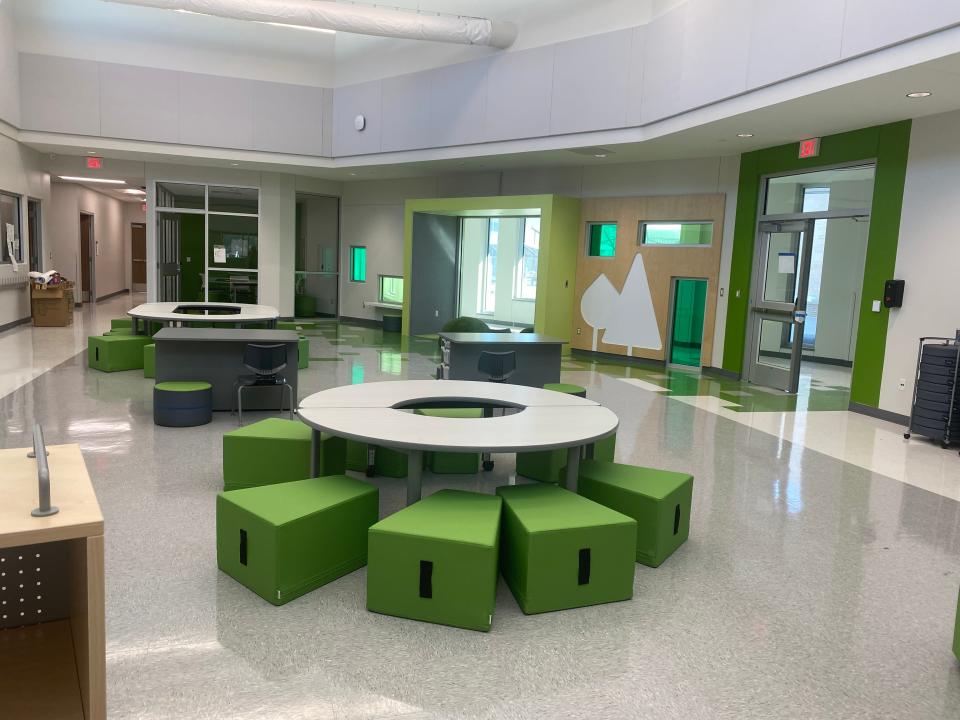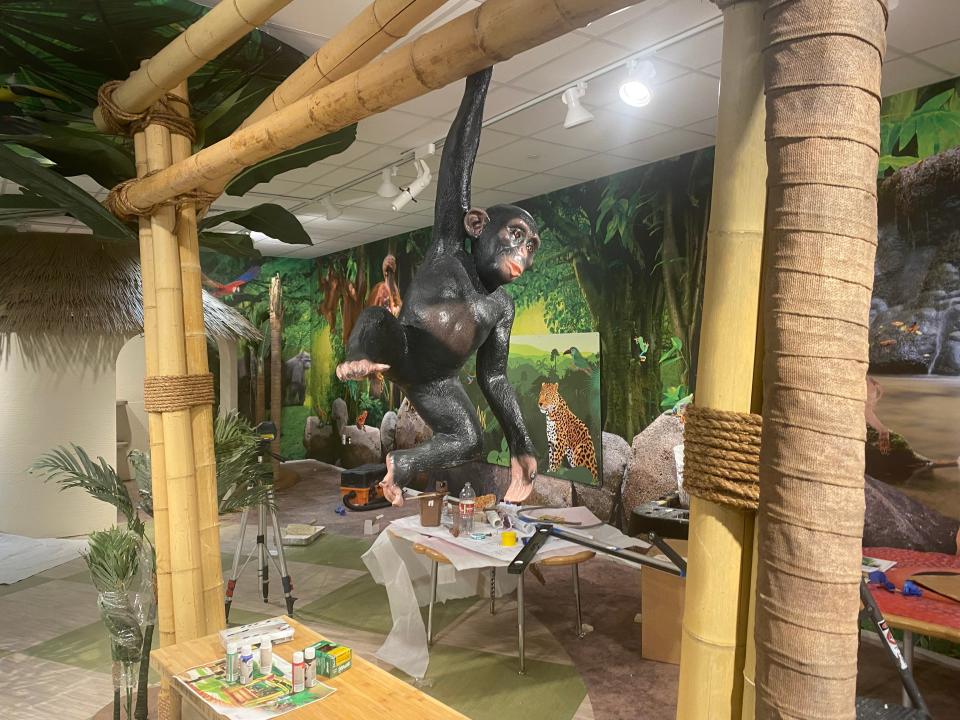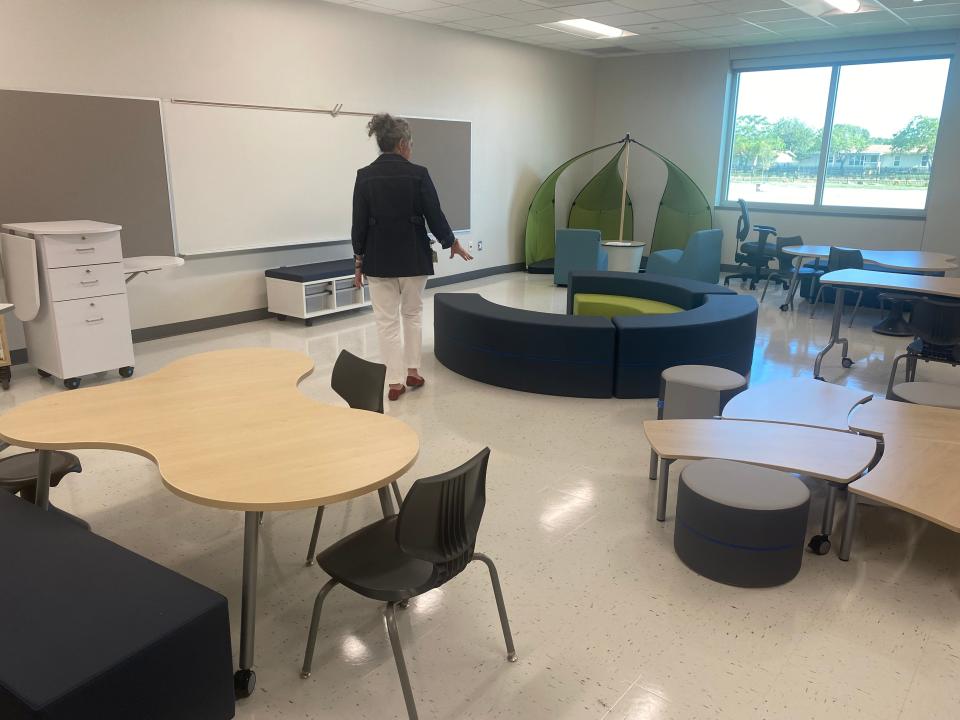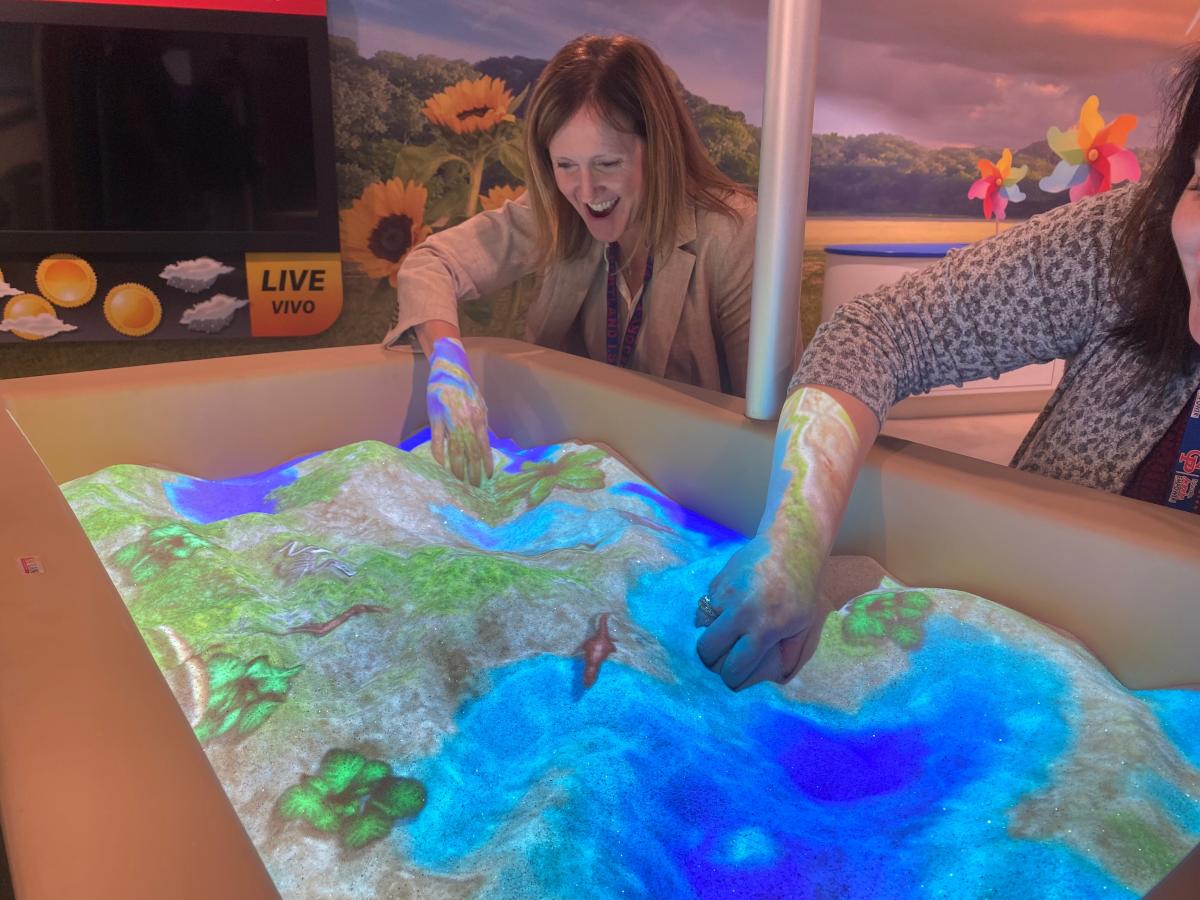It isn’t often that adults wish they were 4-years-old again, but many in G-PISD are wishing just that as crews put the finishing touches on a new school full of rockets, dinosaurs and rainbows.
The Early Childhood Center is uniquely designed to serve pre-K and kindergarten students, with classrooms that could be mistaken for displays at a children’s museum.
Voters approved the project as part of a 2020 bond package. It will open for the 2024-25 school year.

The bond 2020 funding totaled $37.6 million. Due to projected increases in student enrollment, the Gregory-Portland ISD Board of Trustees approved funding for an additional 8 classrooms to serve 175 more students, drawing from operational funds.
The total project budget was $54 million as a result of the expanded project, as well as high inflation during the pandemic, district chief communications and engagement officer Crystal Matern said in an email.
As a part of a 2023 bond package, voters approved a reimbursement from the school bond funds to the operations budget to cover the additional project costs.
Before the new school was built, the property located on Daniel Moore Avenue in Portland housed the district’s central office. Before that, it was the original location of T. M. Clark Elementary School.
The playground isn’t visible from outside the school. Instead, it is surrounded on all sides by the building, a safety and security measure.
In the halls, rainbow stripes line the walls and lead to each neighborhood, showing students the way back to their classrooms.
The building includes six color-coded “neighborhoods”, which contain a central multipurpose room surrounded by three experiential learning classrooms and three regular classrooms. The school does not have a central library, but each neighborhood is equipped with bookshelves to form a decentralized library across the campus.


Each neighborhood will serve three kindergarten and three pre-K classes. The pre-K classes will spend most of their time inside one of the experiential learning classrooms, decorated with vibrant colors, large interactive exhibits and play spaces and decorated with graphics on the walls, ceilings and floors.
“One of the things that makes me most excited is that really we’re taking care of kids where we should be teaching them to learn,” Early Childhood Center Director Robin Rice.
The meaning of the word “kindergarten” is a garden for children, Rice said.
“You tend to that garden where they are at that moment,” Rice said.
Much of early childhood learning is rooted in play, Rice said.
“Over the past 30 years, we’ve kind of gotten away from that,” Rice said. “We’ve thought more about academics, academics, academics. But what we’ve seen is that children have really struggled to learn if they don’t have some of those social emotional and soft skills in place.”


Children learn social emotional skills through play, such as learning how to deal with disappointment when their tower of blocks comes crashing down, how to share when a friend wants the same toy as them and how to work together while playing make-believe.
“Those are skills you don’t learn if you’re sitting behind a desk and being told to be quiet all day long,” Rice said.
Kindergarteners will spend most of their classroom time in more traditional classrooms but will have the opportunity to visit and play inside the experiential classrooms for part of the day.
“They intermingle and share the rooms,” Rice said. “It’s just that pre-K will spend the majority of their time in the experience rooms and kindergarten will spend the majority of their time in the regular classroom.”
Each experience room is themed. One has a ceiling reminiscent of the night sky with a screen displaying constellations, a large rocket in the center of the room with seats children can strap into while it vibrates and audio of a launch plays. A sensory table is shaped like a satellite.
“Play is the method, learning is the outcome,” Rice said. “We were really intentional about making sure that our standards were covered.”


In a storybook and fairytale room, a giant mushroom beams spotlights onto the floor. An Earth-themed room is full of science displays, including an interactive sandbox that displays imagery of hills and water that change as students dig and pile sand.
“The rocket blew my mind, but this is the number one thing that I’ve come across so far,” district construction manager Alton Alexander told Superintendent Michelle Cavazos after trying out the sandbox Wednesday. “I love it. It blew my mind.”
A locally-themed Gulf Coast room will include hermit crab class pets and play stations where children can count, weigh and measure toy fish. There are multiple environment-themed rooms focusing on polar, savannah, rainforest and ocean environments. There’s a pet room, a construction room and a dinosaur room complete with a bearded dragon class pet.
The themes were chosen based on learning potential with the goal of building up background knowledge and vocabulary. During the planning stage, the district also asked students to envision their dream school.
The dinosaur and fairytale themes draw directly from these student responses.
Where there are words written on the walls, everything is in both Spanish and English.
Though not as colorful as the experiential classrooms, the other classrooms are still designed with movement and adaptability in mind. There are more tables and chairs in these rooms, but some of the tables are low-to the ground, and in addition to basic chairs, there are also wobbly seats, floor pads and soft stadium seating.


“All of the furniture was chosen by kindergarten teachers and it’s flexible in the ways kids need,” Rice said.
In a traditional kindergarten classroom, students might gather around the teacher on the carpet. In the Early Childhood Center kindergarten classes, the soft stadium seating means that children can get on the floor, but they don’t have to if they’d be more comfortable sitting another way, for example if they have a disability that impacts how they can sit.
In kindergarten, part of the focus is on preparing students for the typical classroom learning experience that will mark their school experience as they get older. To ease the transition, the district has also invested in incorporating some experiential learning elements in the elementary schools.
Teachers will not be assigned to specific classrooms. Instead, they and their students will rotate together through the school and the experiential classrooms. Teachers will have access to a shared office where each will have their own desk.
The campus also has an activity space, arts classroom, outdoor turf courtyard space including a playground, standing gardens and outdoor easels and a stage.
“We saw this as an opportunity to transform how we do teaching for our kids, especially at this level,” Cavazos said.
The building also includes a family room where the school can host volunteer activities and meetings for parents.
Right now, many of the neighborhoods and classrooms are nearing completion. Work is expected to finish up in May and the district plans to unveil the new building to the community during a ribbon-cutting in June.
“It’s not just a cool space,” Cavazos said. “There’s curriculum materials that go with each of the experiences that are directly tied to building literacy and numeracy.”
The building will open for the fall 2024 semester. It has a capacity of 800 students.
Based on current trends, the district is expecting to welcome about 550.
The district does not currently offer universal pre-K, but it is considering expanding the program in the future.
Currently, pre-K is free for eligible children, which includes 4-year-olds who are unable to speak and comprehend the English, meet family income requirements to participate in the free or reduced-price lunch program, is homeless or have ever been in foster care, is the child of an active duty member of the armed forces or someone who was injured or killed while on active duty, or is the child of a person eligible for the Star of Texas Award as a peace officer, firefighter or emergency medical first responder.
Gregory-Portland ISD employees can also apply for a pre-K spot for their child.
Any resident of the district is eligible for kindergarten.
Pre-K registration is currently open. More information is available online at https://www.g-pisd.org/departments-services/school-leadership/registration-clone.
Despite clouds, Oak Park Elementary School teaches all about the eclipse
FAFSA submissions down so far, but still time to submit
Flour Bluff ISD wetlands ambassadors to share research with community
This article originally appeared on Corpus Christi Caller Times: Gregory-Portland ISD nears completion on pre-K, kindergarten campus
